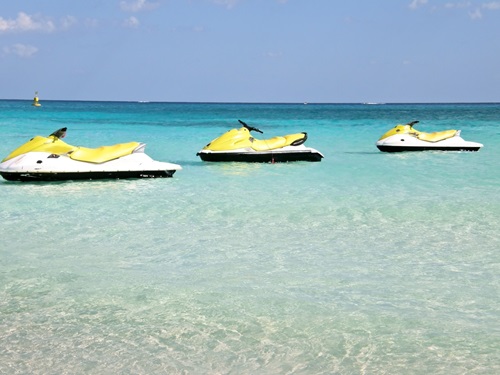
In our previous blog, we delved into the basics of riding a jet ski, providing you with essential knowledge for your exciting water adventure. Now, in Part 2 of our series, we’re taking your jet skiing experience to the next level. We’ll explore safety measures, handling techniques, and much more, ensuring that you not only enjoy the thrill of jet skiing but also do so with confidence and security. So, if you’re ready to ride the waves like a pro, let’s dive into the world of jet skiing!
Chapter 4: Safety Comes First
Jet skiing is thrilling, but safety is paramount. In this section, we’ll explore essential safety tips and regulations to ensure your jet skiing experience is secure.
Is Jet Skiing Safe?
This water adventure can be both exciting and safe, as long as you follow safety measures. You don’t need to be a swimmer to enjoy it, but wearing a life jacket and staying in calm, supervised areas is crucial, especially for non-swimmers.
For pregnant women, caution is advised due to the high-speed and jarring movements of jet skiing. Consult a healthcare provider before participating during pregnancy.
Age and certification requirements are essential. In many places, you must have a boating safety certificate and be at least 14 years old to operate a Personal Watercraft (PWC). This ensures everyone’s safety.
Chapter 5: Mastering Handling and Maneuvering
Handling a personal watercraft (PWC) with skill is vital for a safe and enjoyable ride. This section focuses on steering, throttle control, and reboarding techniques.
Steering a Jet Ski : Essential Tips
Balancing and controlling your PWC is key to effective steering. PWCs steer using a jet of water at the back, making throttle control crucial for maneuvering and handling emergencies.
Throttle Control for Safe Operation
Throttle control is a fundamental aspect of PWC operation, especially for steering and handling emergencies. Jet skis in Myrtle Beach lack traditional boat rudders and rely on water thrust for steering. Releasing the throttle reduces steering control significantly.
 Throttle’s Role in Steering
Throttle’s Role in Steering
Reducing throttle decreases your steering ability. To steer effectively, maintain some throttle. In emergencies, maintaining speed or slightly accelerating allows better steering to avoid threats.
Handling Emergencies
In critical situations, don’t release the throttle entirely. Maintain control by keeping your finger on it, even if it feels counterintuitive. Throttle control ensures safe PWC maneuvering.
By practicing throttle control, especially during turns and emergencies, you’ll have a safer and more controlled experience. It’s not just about speed; it’s about maintaining the right power for control.
Splash Down: Re-Boarding Your Jet Ski
Falling off your jet ski rental happens, but re-boarding safely is essential. Attempting to reboard from the side can flip your PWC. Learn the right method.
Safe Reboarding Technique
Reboard your jet ski rental in Myrtle Beach from the back. Reach for the handle behind the seat, pulling yourself onto the back deck. This keeps the PWC balanced and prevents flipping. If riding with others, one person should board at a time.
Take your time; don’t rush. Multiple failed attempts can lead to fatigue. Relax, plan your reboarding, and climb back aboard slowly.
Understanding PWC Safety Hazards
Being aware of potential safety hazards on a PWC is crucial to prevent accidents and injuries.
Handling the Intake Grate and Impeller
The intake grate and impeller at the back are hazardous when the engine is running. They draw in water for propulsion but can entangle or injure you if approached closely. Always maintain a safe distance from these parts during operation.
Now that you’re equipped with safety knowledge and handling tips, it’s time to hit the waves and enjoy jet skiing responsibly. Have a fantastic adventure on your PWC!
Thinking about hitting the waves on a jet ski? Great news! We’ve got you covered. Action Water Sportz will set you up for an awesome day on the water.
Check other links here:

No comments:
Post a Comment